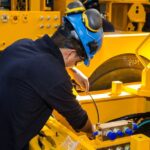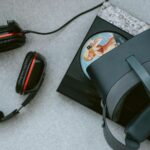
Embarking on the journey of tools for 3d printing opens up a realm of creativity and innovation. In my exploration of this exciting field, I’ve discovered a range of indispensable tools that elevate the 3D printing experience. From precision slicers to versatile filament splicers, these tools are the unsung heroes behind flawless prints.
As I delve deeper into the world of tools for 3d printings, I’ve come to appreciate how each gadget plays a crucial role in achieving optimal results. Whether it’s calibrating the printer for intricate designs or fine-tuning the temperature settings, having the right tools at hand can make all the difference in the final outcome. Join me as I unravel the mysteries of these essential tools and uncover the secrets to mastering the art of tools for 3d printing.
Tools for 3D Printing
Exploring the realm of tools for 3d printing has revealed their pivotal role in attaining exceptional outcomes. Delving into the array of essential gadgets, from precision slicers to filament splicers, showcases their significance in ensuring impeccable prints. Each tool intricately contributes to the calibration of printers, fine-tuning of settings, and realization of intricate designs. Unveiling the secrets to mastering the art of 3D printing hinges on embracing and leveraging these critical tools.
Essential Tools for 3D Printing
Filament
When it comes to tools for 3d printing, filament is one of the most critical components. In my experience, having quality filament is essential for producing sturdy and detailed prints. It’s vital to select the right type of filament for your project, whether it’s PLA, ABS, PETG, or other variants. Different filaments have varying properties, such as strength, flexibility, and heat resistance. As a result, choosing the appropriate filament is crucial for achieving the desired outcome with your prints.
Build Plate
The build plate is another indispensable tool in the world of tools for 3d printing. I’ve found that a clean and leveled build plate is crucial for successful prints. The build plate serves as the foundation for your prints and ensures proper adhesion during the printing process. Maintaining the build plate’s cleanliness and levelness is key to preventing print failures and achieving accurate prints.
Nozzle
Lastly, the nozzle plays a significant role in the overall tools for 3d printing process. As the component responsible for extruding filament onto the build plate, the nozzle’s size and quality can impact print speed, detail, and precision. I’ve found that having a clean and well-maintained nozzle is essential for producing high-quality prints. It’s crucial to regularly check and clean the nozzle to prevent clogging and ensure smooth filament extrusion.
Advanced Tools for Enhancing 3D Printing Results
Enclosure
Enclosures are vital tools in tools for 3d printing as they help maintain a stable printing environment by regulating temperature and minimizing external factors’ impact on prints. An enclosure ensures consistent print quality, especially for materials sensitive to temperature changes like ABS. By enclosing the printer, I can prevent warping and improve the overall adhesion of layers, resulting in smoother and more precise prints.
Filament Dryer
A filament dryer is an essential tool for optimizing print quality by removing moisture from filaments before printing. Moisture in filaments can lead to issues like poor layer adhesion, rough surface finish, and filament degradation. By using a filament dryer, I can enhance the printing process by ensuring the filament is dry and free from contaminants, resulting in stronger and more durable prints with improved surface quality.
Automatic Bed Leveling Sensor
An automatic bed leveling sensor is a game-changer in tools for 3d printing, offering convenience and precision in leveling the print bed. With this tool, I can avoid the hassle of manually leveling the bed before each print, saving time and ensuring consistent print quality. The automatic bed leveling sensor detects any discrepancies in bed leveling and makes real-time adjustments during the printing process, leading to improved first-layer adhesion and overall print accuracy.









